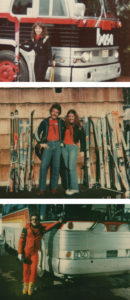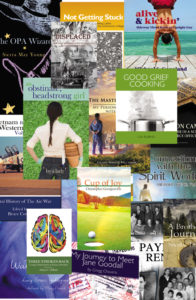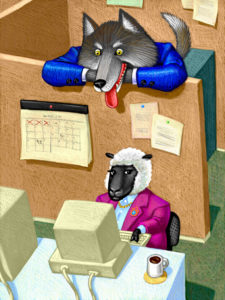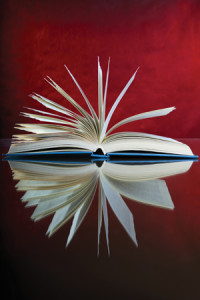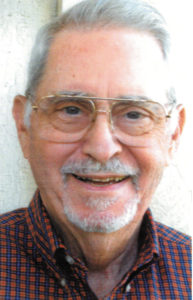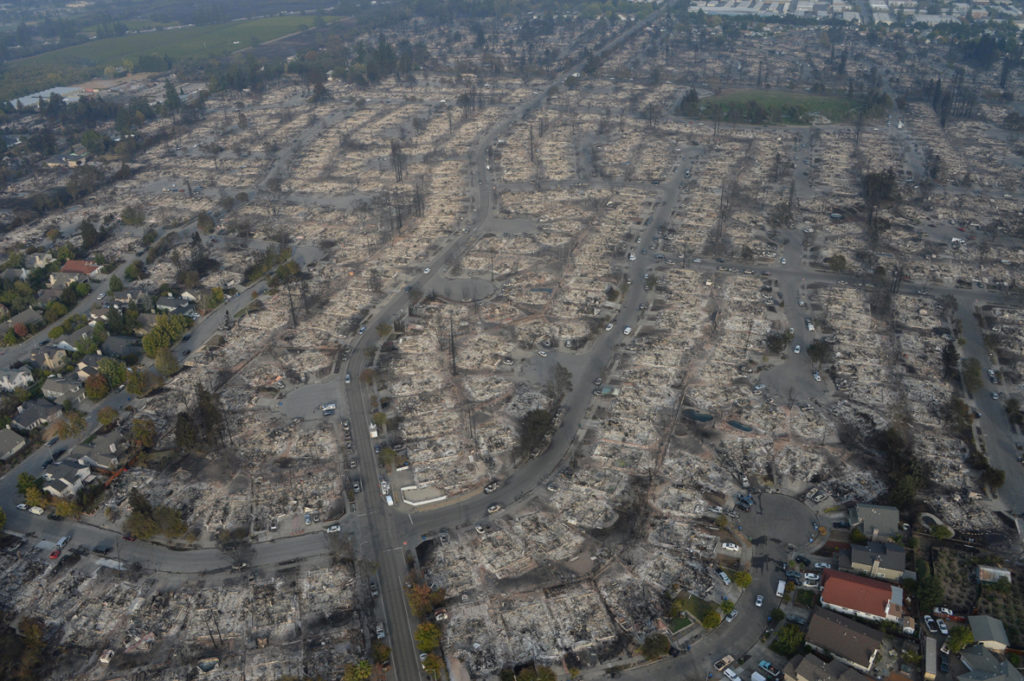Imagine how thrilling it would be to meet and spend some time with a world champion athlete—playing catch with Buster Posey, taking a swim with Michael Phelps, or skiing a few runs alongside Lindsey Vonn or Shaun White. And you wouldn’t be a spectator, you’d be doing whatever someone who’s the best in the world does—albeit not as well of course—right alongside them. It would be just you and Buster; you and Lindsey; you and Michael. What a rush, right?
Believe it or not, years ago that happened for me. It was a case of being at the right place at the right time, meeting a person who was then the best in the world. It was a weekday and I was skiing at Kirkwood Meadows ski resort in the California Sierras, sometime in the late 1970s—probably 1978 or 79. On that particular day I was skiing alone for a while on a secluded run with very few other skiers on it. It wasn’t a steep slope and I was enjoying just “cruising,” and not having to wait in a lift line. I could essentially ski right up to the lift and hop on. The day really could not have been any better… until it was!
As I skied down the run one more time and approached the chairlift loading area, there ahead of me was an attractive young woman with 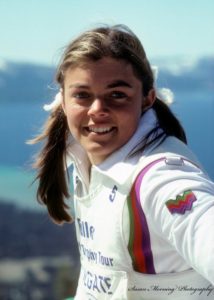 pigtails and a knock-out smile I’ll never forget. “I know this girl” I thought, as we boarded the chairlift together. “You’re Genie Fuller,” I said to her, as if she didn’t know her own name. “Yes, I am,” she confirmed with a giggle. As the chair carried us to the top, my side of the conversation undoubtedly included multiple mentions of the words “cool,” “awesome,” and “far out.” This was the 70s after all!
pigtails and a knock-out smile I’ll never forget. “I know this girl” I thought, as we boarded the chairlift together. “You’re Genie Fuller,” I said to her, as if she didn’t know her own name. “Yes, I am,” she confirmed with a giggle. As the chair carried us to the top, my side of the conversation undoubtedly included multiple mentions of the words “cool,” “awesome,” and “far out.” This was the 70s after all!
In the 1970s and early 80s, Genia Fuller (now Genia Fuller Crews) was one of the best-known, most decorated freestyle skiers on the planet. Nothing less than a mega-celebrity of the skiing world, I recognized her from TV, magazine articles, and advertising, so what happened next completely blew my mind. In a most casual, cheerful way, I received an unexpected invitation that would become and remain one of the highlight events of my life: Genia Fuller invited me to ski with her!
The Evolution of a New Sport
The freestyle skiing competitions we all watched in the recent 2018 Winter Olympics in Pyeong Chang South Korea, all evolved from earlier versions of the various disciplines considered freestyle events. Today’s Olympic skiing and snowboarding freestyle events include aerials, moguls, ski cross, slopestyle, and half pipe, but it wasn’t until the 1988 Olympics in Calgary that any freestyle event had ever even appeared in the Olympics. In that year, only three freestyle elements existed: aerials, moguls, and ballet, and these were only included in the 1988 Olympics as “demonstration sports,” meaning they were not events where medals were awarded.
These three original elements of freestyle evolved from earlier years of what was mostly called “trick” skiing, which consisted primarily of jumps and simple acrobatic maneuvers. One of the earliest pioneers credited with making aerial maneuvers popular was Stein Eriksen, a gold medalist racer in the 1952 Olympics. The first organized freestyle competitions took place in the mid-1960s, as more skiers became attracted to the idea of creative, expressive skiing, as opposed to traditional ski racing where the goal is simply to get to the bottom of the hill first.
Toward the end of the 1960s and into and throughout the 1970s, freestyle became a movement within skiing culture that grew at an explosive pace, forever transforming what had previously been a rather conservative sport. In many ways, the changes reflected the broader culture; the new generation of rock-n-roll, free-love, and hippies. Just as its name implied, freestyle was all about free and all about style. No longer was skiing about winning a race—it was about freedom of expression. It was about fun!
Until greater structure began to take shape, even the term used to describe freestyle skiing and its practitioners was malleable, as it was then also called “Hot Dog” skiing, and freestylers were known as “Hotdoggers.” And to the chagrin of many racers, the hotdoggers became the kings—and queens—of the mountains; nothing was as exciting as watching a skilled hotdogger blast his or her way down a steep mogul field, as freestyle performances began drawing far larger crowds than ski races.
Competitions formed and it wasn’t long before the cream rose to the top—expert skiers all, with superb basic skiing techniques to be sure, but with the added, critical ingredient of a desire to express themselves through skiing. These maverick pioneers of freestyle hungered to take skiing into new directions—artistic directions—where it had never gone before.
The three forms—aerials, moguls, and ballet—that comprised Hot Dog skiing competitions were wide open to the artistic expression of the skiers. There were no coaches in the early years, and oftentimes, particularly in the mogul events, the performances were spontaneously created, on the fly as it were, based upon the slope characteristics and conditions at the time. It wasn’t long before music was added to enhance the performances, a move that only increased the popularity of freestyle events.
Mogul runs were no-holds barred, wild, erratic and often crazy performances with hotdoggers smashing, jumping, and spinning their way to the bottom of a hill. The aerials were equally hair raising, as competitors would try and outdo one another with tricks and flips of every sort. A few standards included the Spread Eagle, the Daffy, and the Helicopter.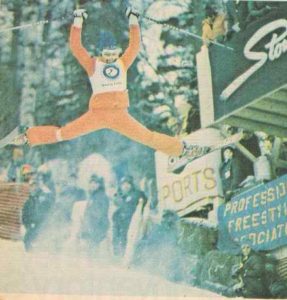
The ballet performance was, to my way of thinking, the more technically demanding of the three elements of freestyle competition. Akin to figure skating, albeit while wearing full length skis, ballet skiing required superior edge control and balance, and in order for one to place well in competition, it required the ability to be graceful and rhythmic; it required technically-artistic finesse.
All freestyle competition events today, whether on skis or snowboard, are rooted in what the pioneers of freestyle—the hotdoggers—created in the 1960s and 1970s. Some of the pioneers and early notables of the grand era of true “Free” Style skiing include: John Clendenin, Suzy Chaffee, Wayne Wong, Penelope Street, ‘Airborne’ Eddie Ferguson, Marion and Ellen Post, Scott Brooksbank, Kathy Brock, Roger Evans, Holly DuPont, Bob Theobald, Coleen Stewart, Bob Salerno, Karen Coburn, Doug Pfeiffer, Michael Grazier, Robert Young, Bill O’Leary, Jack Taylor, Mike King, , Donavon Phillips, Dan Pierce, Billy Pugh, Rick Wood, Gerry Goodman, Troy Caldwell, Floyd Wilke, Bob Howard, among others, as well as one very special freestyler named…
Genia Fuller
I was well aware of Genia Fuller in the 1970s having seen her on TV, in magazine articles and ads. And through the convenient miracle of social media, I was able to (re)connect with her recently and she graciously agreed to an interview. I knew it was unlikely that she’d remember skiing with me at Kirkwood so many years ago, but I did want to know if she lived in the Tahoe area back then.
“Yes, in 1974 I moved to Tahoe. I had a house in Meyers. That was awesome because I created a base up there so I could fly out of Reno or out of San Francisco, depending upon where I had to go,” she said, “I skied at Heavenly and skied all over the place, and one of my favorite places to train was Kirkwood, because it was quiet.”
Bingo! So it wasn’t a dream! I reminded her of us having skied together, and told her I was struck by how humble and friendly she was. “You were doing ballet stuff, and there was hardly anyone else around,“ I said, “and it was such a neat experience, but I couldn’t believe I was skiing with one of the best in the world…”
“In my brain, I was just me,” she said. “I never considered myself anything special except that I was having a heck of good time doing what I did, and I was able to do it well. And I’m glad you have that memory; and thank you for putting it back in my brain. It was ‘You wanna ski? Let’s go ski.’ That’s the way it was then.”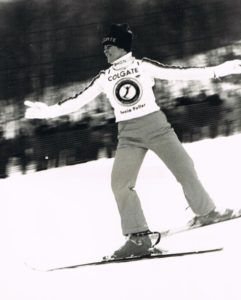
Genia continued, “I have to tell you a funny story. When we had the big reunion of the freestylers in 2011 in Sun Valley. You know you never know how people perceive you. And so I really didn’t know. But when I got to Sun Valley, I was floored by the response that I got from people because I honestly didn’t know; because when you’re on top, you don’t know if people hate you, love you, want to see you fail, see you succeed. It’s awkward at times. But the response in Sun Valley was incredible and it really kind of opened my eyes that possibly, I made a positive impression on people.”
Indeed, in everything I’ve read, seen, or heard about Genia Fuller Crews, aside from her being one of the more innovative and most decorated freestyle skiers of all time, what strikes people about her is who she is as a person—genuine, humble, caring, and cheerful. She is described as “an ambassador of freestyle skiing,” and as one of the sport’s “sweethearts.”
Foundation of a Champion
Born in 1954, Genia Fuller was originally from Framingham, Massachusetts. Many years before she learned to ski she learned to skate. Her dad took her to The Skating Club of Boston, the oldest privately held figure skating club in the country, and the training home of a good number of then Olympic and world champion skaters.
“The first person to take me around the rink at two years old was Tenley Albright who was an Olympic champion,” Genia explained, “and we mingled with the likes of Dick Button, Carol Heiss, and Maribel Vinson-Owen. All of these people who were just incredible skaters were also people that took the time to watch a little kid and give them input.”
Unfortunately, many of the notable skaters who helped teach Genia to skate were killed in a plane crash in 1961. Even at such an early age, the tragedy obviously impacted Genia, as her voice broke in telling me about it. “My father was the club treasurer that year, so he had to make the announcement on radio… and it was pretty bad. It made me appreciate people a lot, I think.”
On Skis
Between the ages of two or three until fifteen or sixteen, Genia continued to skate. It was upon this foundation that her prowess at freestyle ballet was built. The seeds for great technical skills on skis were sown on that rink in Boston. While she enjoyed skating, she “hated” doing the school figures, so her aunt took her skiing for the first time in 1968, to Jericho Hill in Marlborough, Massachusetts. “They had two rope tows and a couple hundred vertical feet—and that’s where I learned to ski,” she explained, “and the edge control and body awareness and that type of thing was very easy for me to pick up because I had that from the skating.”
A friend of Genia’s was a racer so she tried a little bit of racing, “My first trophy was a 4th place trophy—I still have that,” she giggled.
After learning the basics, she hungered for bigger slopes, so her father took her skiing a couple of times a year in either Vermont or Maine. She loved it, and as she puts it, “I skied till I was blue in the face.”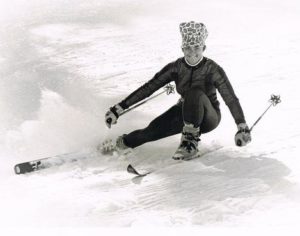
Genia joined her high school ski club, and then, in her sophomore year, went on a ski trip to Austria with the club. “It was $309 for ten days. That included air fare, lift tickets and lodging,” she explained, “I skied and did some racing there because that was all they were doing… but I knew at that point that that was what I wanted to do.”
By the time she returned from Europe, skiing had moved front and center for Genia Fuller. She learned about a contest at Waterville Valley—one of the very first major freestyle contests. She was still just a junior then, so could only enter in the 16 and under class. “I still have the telegraph from Doug Pfeiffer that says, ‘Yes, you qualify to compete,’” she tells me, “so, my mom and I went up there and I did my thing and mom was cold, so we had to go home. And I never really knew where I had placed (laughs) but I had a good time! Then, forty years later, Brian Gilmore who did the film Dog Days of Winter, tells me he found the results and that I was second that day!”
Genia then entered in a number of local contests around New England, and in her junior year, attended an instructor’s clinic in Killington, Vermont. When she finished training, in typical Genia style, she ranked third in a class of 300 instructors. Not surprisingly, while still only seventeen, they offered Genia a full-time job. She agreed to part-time, working as a ski instructor on weekends and holidays while working at a local ski shop closer to home.
Teaching others to ski fit Genia perfectly, as her later years in the sport and beyond would reflect—she loved helping others as much or more than she loved to ski and compete. “I loved it. I wouldn’t have traded it for the world,” she told me.
A Champion Arrives
Then, in 1973 she was invited to the freestyle nationals in Sun Valley Idaho. The first day of the competition was the ballet event. She finished sixth that day. “I was ecstatic because I wasn’t last, and I was excited because there was more to come,” she said. The second day was the moguls event and she finished fourth. “I was thrilled because I was fourth and that was better than the day before… and I still wasn’t last!”
After that, there was just one freestyle event left—the aerials. It was in this event at that she would meet another up-and-coming freestyler  who would also become a major force in the freestyle skiing universe. As Genia describes the encounter: “The third day was the aerials, and I had to beat this Suzy Chaffee chick. I say that tongue-in-cheek, because she was a competitor—she was the top competitor—and that was who I needed to beat. We had never met. Lo and behold, I won the aerials, and that was my first national title.”
who would also become a major force in the freestyle skiing universe. As Genia describes the encounter: “The third day was the aerials, and I had to beat this Suzy Chaffee chick. I say that tongue-in-cheek, because she was a competitor—she was the top competitor—and that was who I needed to beat. We had never met. Lo and behold, I won the aerials, and that was my first national title.”
One of the notable differences between Genia Fuller and the other freestyle skiers at that time was that in the ballet events, unlike the other competitors, Genia did not use ski poles. Looking at her performances, I’d say it was wise move on her part because regardless of whether she happened to win or lose in a particular ballet event, one thing was certain—you, and the judges, could not forget her. Being “poleless” put her in her own unique category.
After winning in Sun Valley, Genia’s first taste of corporate sponsorship occurred when Nordica sent her a new pair of ski boots—a mere shadow of much greater things to come.
From this point forward, Genia’s freestyle career trajectory was skyward. She was offered the prestigious position of Freestyle Director at Park City West in Utah, only to be followed by an invitation by film producer Willy Bogner to travel to St. Moritz, Austria, where she and Suzy Chaffee would star in the ski film “W”.
When Genia returned from Europe, she went full time on the full freestyle skiing tour, and her first event—the first of the season—would become one for the history books. It was the 1974 Freestyle Championship event in Waterville Valley, New Hampshire. As the phrase goes today, Genia “put it down” at Waterville by taking first place in all three events; aerials, moguls and ballet, and the combined, overall competition trophy.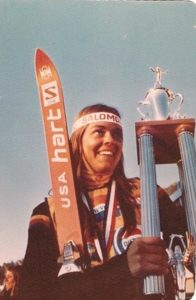
Genia Fuller made freestyle skiing history that day in doing what no other competitor, male or female, had or has ever duplicated, by winning in all three individual events and the combined title in a single competition. As she recalls that day, she said, “I just kind of came from out of the woodwork; I didn’t know what was going on; I was almost embarrassed. I thought, ‘this is really strange.’ There’s no instruction manual to tell you how to behave or how to feel…you just kind of go with it, but it was like, ‘oh my goodness…’”
The wins continued for Genia Fuller throughout the 1970s. Looking at her overall record in freestyle, she won so many events that I would need additional pages just to list them. She won the season-long aerial title in 1974, and she went on to win three World Freestyle championships, in 1974, 1975, and 1978. She then won the Japan Championships three times as well, in 1977, 1978, and 1979.
Genia was named Skiing Magazine’s Freestyle Skier of the Year three times; in 1974, 1975, and 1978, and was featured in numerous publications where she shared her techniques and offered advice to other skiers.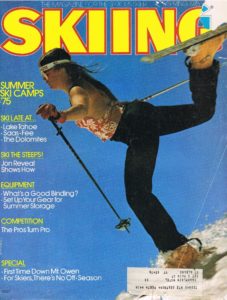
Genia’s 1976 and 1977 seasons were cut short due to illness, but she still managed to finish 5th in 1976 and 4th overall in 1977. Had she not been ill during those years, while we’ll never know for sure, I’d bet her chances for title wins during those years would likely have been much better than even.
While her talent and strength as a freestyler did the talking for her as a competitor, her radiant smile, good looks, and overall positive nature made Genia a natural for major commercial sponsorships that benefitted the entire skiing industry. She attracted sponsors—aka money for the sport that benefited all the competitors —like few others before her. Colgate Palmolive, ABC Television, and other major sponsors came aboard, in large part because of Genia’s effort.
She appeared in ski films and on TV shows like, Women’s Superstars, Battle of the Sexes, and the ABC special, The Lady is a Champ. Her appearances went a long way at popularizing freestyle skiing. Even in the off season, Genia was the consummate, unofficial ambassador of freestyle skiing, performing in over 500 dry-land ski shows and exhibitions throughout the world.
After a spectacular career in freestyle skiing, Genia transitioned to other passions: music and emergency preparedness and aid—but that part of her story I will leave to a future issue(s) of ALIVE.
Genia Fuller Crews was and is a fearless trailblazer. She was one of pioneers of a new sport; what was the foundation that all freestyle skiers and snowboarders today stand upon. And she was and is still one of the strongest advocates for the recognition of women in sports. When I asked her about what she thought about her impact, she said:
It’s really amazing. Women have come a long way but we still have a long way to go. Women in the freestyle tour were kind of shoved to the background a lot, and the last year that I competed, I had to fight for stupid little things for the women. The last year that I competed, at the last contest at Silver Star, they didn’t bring up the medals for the women, so they weren’t going to put us on the podium. So I said, ‘You know what? There’s not going to be a podium until you send somebody down and get those medals.’ And the press wasn’t happy, and I remember crying all the way down afterwards because it was just so stupid. But we put women on the map; that women could be glamorous and women could be athletic—it was a wonderful era for that. And the women of today have continued that. But still in smaller ways, they’re still not at the forefront of where they should be. There’s room for much, much more.
The women that are pioneers that kind of set the younger kids up for success later on—on a little easier road, so to speak—Billy Jean King and Chrissy Everett and Martina—look at what they accomplished. It just makes me proud to have been a part of that; in that maybe I have helped somebody have an easier time succeeding, or maybe smoothed a pathway or maybe given people options.
The entire ski industry and women in general have a lot to thank Genia for. She was and is still is a class act and a terrific role model. As one of freestyle skiing’s clearly dominant competitors, and a pioneer of the sport with an unmatched record, her humility is remarkable. Genia was inducted into the U.S. Ski and Snowboard Hall of Fame in 2016.
I find it difficult not to use clichés in describing how it felt to ski with Genia Fuller. It was exciting, amazing, exhilarating, and humbling. I’d ski ahead of her and she’d follow, practicing the most graceful ballet ski maneuvers you could ever imagine. In the forty years that have passed since that experience, I have skied many times, and every time I do, fond memories of that day reappear.
Thanks, Genia, for this interview… but thanks mostly for that invitation to ski with you.
Today, Genia Fuller Crews lives in Simi Valley, California. She is still involved in promoting and serving the ski industry, serving on the Board of Directors for the U.S. Ski and Snowboarding Hall of Fame. Outside skiing, Genia is an EMT and a CPR, First Aid, and EMT Instructor. She is well immersed in disaster teams and disaster / emergency preparedness activities for Ventura County.
The U.S. Ski and Snowboarding Hall of Fame annual induction event will be held April 12-15 at Squaw Valley USA. For tickets visit https://snowsporthistory.com/event/tickets/ . For information about the U.S. Ski and Snowboarding Hall of Fame, visit http://skihall.com
To watch some of Genia’s incredible skiing, you can watch:
The Lady is A Champ at https://youtu.be/BUWZARS_yEk
Skiing Free at https://youtu.be/nfEDSjJQHO8
Genia’s Hall of Fame induction is also online at https://youtu.be/sppiBnWPgZE
